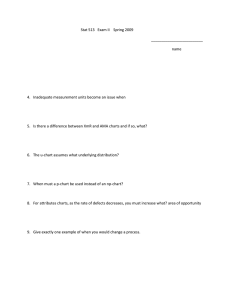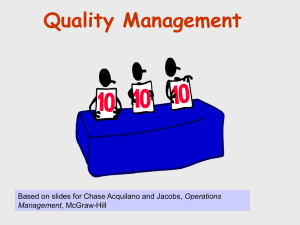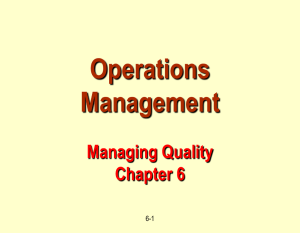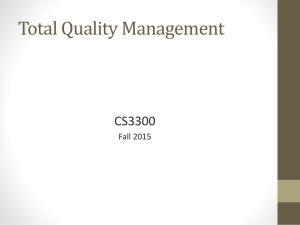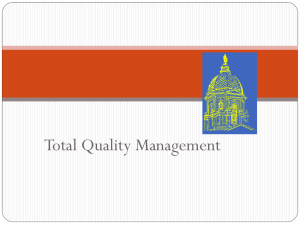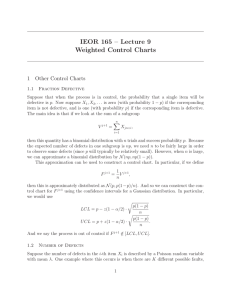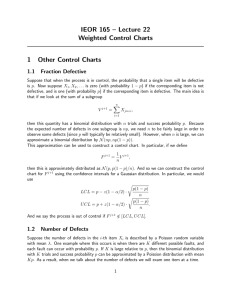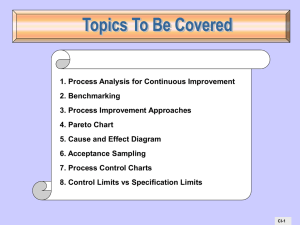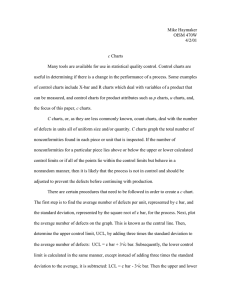QualityTools
advertisement
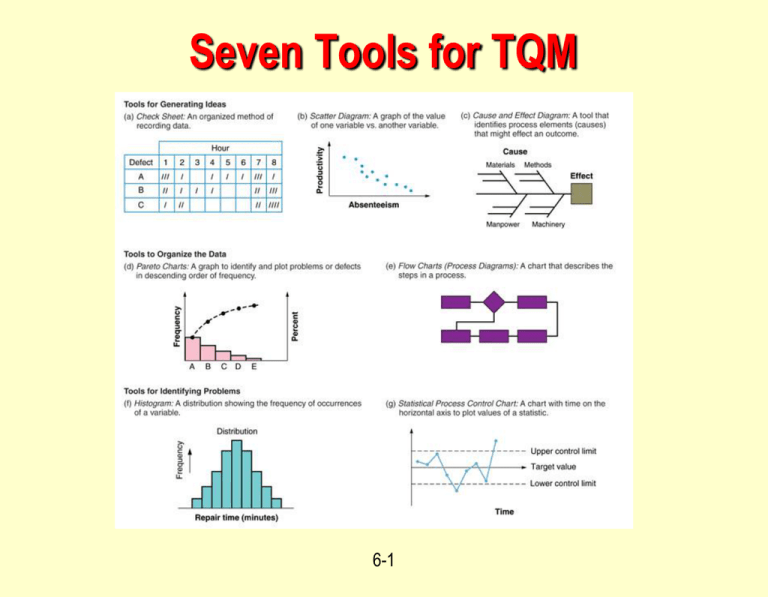
Seven Tools for TQM 6-1 Tools for TQM Quality Function Deployment House of Quality Taguchi technique Quality loss function Pareto charts Process charts Cause-and-effect diagrams Statistical process control 6-2 Tools of TQM Tools for generating ideas Check sheet Scatter diagram Cause and effect diagram Tools to organize data Pareto charts Process charts (Flow diagrams) Tools for identifying problems Histograms Statistical process control chart 6-3 Pareto Analysis of Wine Glass Defects (Total Defects = 75) 60 88% 54 50 97% 93% 100% 100% 72% 80% 40 60% 30 40% 20 12 5 10 4 2 0 20% 0% Scratches 72% Porosity Nicks Contamination 16% 5% 4% Causes, by percent total defects 6-4 Misc. 3% Cumulative Percent Frequency (Number) 70 Process Chart Shows sequence of events in process Depicts activity relationships Has many uses Identify data collection points Find problem sources Identify places for improvement Identify where travel distances can be reduced 6-5 Cause and Effect Diagram Used to find problem sources/solutions Other names Fish-bone diagram, Ishikawa diagram Steps Identify problem to correct Draw main causes for problem as ‘bones’ Ask ‘What could have caused problems in these areas?’ Repeat for each sub-area. 6-6 Cause and Effect Diagram Example Problem Too many defects 6-7 Cause and Effect Diagram Example Method Manpower Main Cause Too many defects Material Machinery Main Cause 6-8 Cause and Effect Diagram Example Method Manpower Drill Overtime Too many defects Wood Steel Material Lathe Machinery Sub-Cause 6-9 Cause and Effect Diagram Example Method Manpower Tired Overtime Drill Slow Old Wood Steel Material Lathe Machinery 6-10 Too many defects Fishbone Chart - Problems with Airline Customer Service 6-11 Statistical Process Control (SPC) Uses statistics & control charts to tell when to adjust process Developed by Shewhart in 1920’s Involves Creating standards (upper & lower limits) Measuring sample output (e.g. mean wgt.) Taking corrective action (if necessary) Done while product is being produced 6-12 Statistical Process Control Steps Start Produce Good Provide Service Take Sample No Assign. Causes? Yes Inspect Sample Stop Process Create Control Chart Find Out Why 6-13 Process Control Chart Plot of Sample Data Over Time Sample Value 80 Sample Value UCL 60 40 Average 20 LCL 0 1 5 9 13 17 Time 6-14 21 Control Chart 6-15 Patterns to Look for in Control Charts 6-16 Basic Steps in Problem Solving 1. Define the problem and establish an improvement goal 2. Collect data 3. Analyze the problem 4. Generate potential solutions 5. Choose a solution 6. Implement the solution 7. Monitor the solution to see if it accomplishes the goal The PDSA Cycle Plan Act Do Study Process Improvement Process Improvement: A systematic approach to improving a process Process mapping Analyze the process Redesign the process The Process Improvement Cycle Select a process Document Study/document Evaluate Implement the Improved process Seek ways to Improve it Design an Improved process Process Improvement and Tools Process improvement - a systematic approach to improving a process Process mapping Analyze the process Redesign the process Tools There are a number of tools that can be used for problem solving and process improvement Tools aid in data collection and interpretation, and provide the basis for decision making Methods for Generating Ideas Brainstorming Quality circles Interviewing Benchmarking 5W2H Quality Circles Team approach List reduction Balance sheet Paired comparisons
